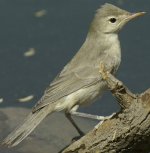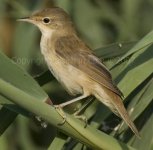hannu said:The long-billed look is not any (sure) feature to id ssp opaca, but I think that your WOW candidates does not look so long-billed as the birds in my mentioned link.
Also we have not reliable and published opaca observations from the east side of Sweden-France line. So Your assumption of opaca in Kuwait seems to be quite difficult to accept in this aspect.
Your quote "the race in Kuwait is either pallida or elaeica." means that the writers of that book did not know surely the range of opaca and elaeica. I think that we know now more than at that time. So in this point of view your met birds are elaeica and languida.
There is misunderstanding here, I never said that opaca occur in Kuwait. I said two things:
1- The race in Kuwait is either pallida or elaeica which are both EOW, even in Isarel Sirihai (B. of Israel 1996) states that only elaeica occur in Israel together with suspected race tamariceti and doesn't accept opaca as occuring in Israel.
2- The link you provided in post #37 "http://www.fugler.no/bilder/spesial/20040912.htm" as EOW is not EOW but WEO (opaca) due to the length of bill, but now as you said bill length is overlapping very much and this is not a reliable feasture.
Alsirhan.





